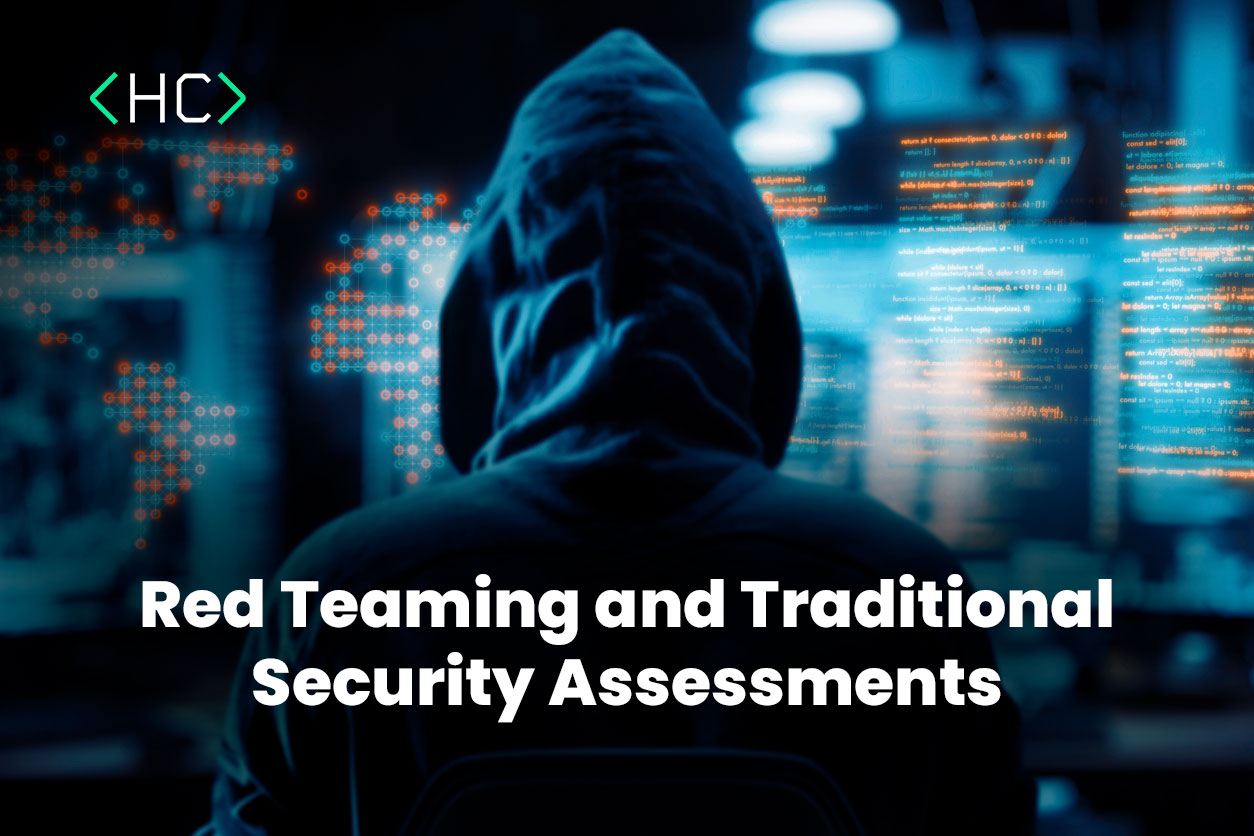Beyond Checkboxes: Red Teaming vs Traditional Security Assessments

Beyond Checkboxes: Red Teaming vs Traditional Security Assessments
In today’s ever-evolving cyber threat landscape, organizations require a robust security posture to safeguard their critical assets. While traditional security assessments have long been a cornerstone of security strategy, they may not always provide a comprehensive view of an organization’s true cyber resilience. This is where Red Teaming steps in.
Traditional security assessments: The Limitations of Checkboxes
Traditional security assessments, like penetration testing and vulnerability scanning, seem to be a necessary security foundation, as they play a vital role in identifying security weaknesses within your IT infrastructure. These assessments often follow a checklist approach, checking for specific vulnerabilities and configuration errors. While valuable, traditional assessments have limitations. They may miss zero-day vulnerabilities or novel attack vectors not yet included in existing vulnerability databases. Additionally, they often focus on technical aspects, potentially overlooking human factors contributing to security risks.
Red Teaming: Going Beyond the Checklist
Red Teaming takes security assessments to the next level, as it goes beyond the checkbox mentality of traditional security assessments. It involves adversarial attack simulation of real-world threats (Advanced Persistent Threats), where a team of ethical hackers (the Red Team) attempts to breach your defenses using the same techniques and tools as real attackers. Their aim is to test and measure the effectiveness and responsiveness of the people, processes and technology used to defend an organization digitally and physically. Unlike traditional assessments, which focus on compliance and adherence to security standards, Red Teaming takes a holistic approach to security testing, mimicking the tactics, techniques and procedures (TTPs) of actual adversaries. The Hackcraft Red Teaming, notably, is based on tailor-made scenarios, without whitelisting and exceptions that evaluates overall security posture.
Key Differences
- Scope and Methodology: Traditional security assessments typically follow a predefined scope and methodology, focusing on specific areas such as network security, application security, or compliance requirements. In contrast, Red Teaming adopts a more adversarial mindset, using tactics such as social engineering, penetration testing and reconnaissance to emulate the tactics of real attackers.
- Realism and Immersion: Red Teaming strives to create a realistic and immersive testing environment that closely mirrors the tactics and techniques used by real adversaries. This approach allows organizations to identify blind spots, weak points and hidden vulnerabilities that may not be uncovered through traditional security assessments.
- Focus on Detection and Response: While traditional security assessments primarily focus on identifying vulnerabilities and weaknesses, Red Teaming also emphasizes detection and response capabilities. By simulating realistic attack scenarios, Red Teams help organizations evaluate their ability to detect, respond to and mitigate cyber threats in real-time.
Benefits of Red Teaming
- Comprehensive Risk Assessment: Red Teaming provides a more comprehensive and realistic assessment of an organization’s security posture, uncovering hidden vulnerabilities and weaknesses that may go undetected by traditional assessments.
- Enhanced Preparedness: By simulating real-world cyberattacks, Red Teaming helps organizations better understand their adversaries’ tactics and develop proactive strategies to mitigate risks and strengthen defenses.
- Improved Detection and Response: Red Teaming helps organizations test and refine their detection and response capabilities, enabling them to identify and mitigate cyber threats more effectively.
- Provides Actionable Insights: Red Teaming delivers specific recommendations to address vulnerabilities and strengthen your overall security posture.
- Cultural Shift: Red Teaming encourages a cultural shift towards a proactive and security-aware mindset, fostering collaboration, innovation and continuous improvement across the organization.
Benefits of Hackcraft Red Teaming
- Identifying Real Life Attacks Impact
Hackcraft Red Team replicates real-world attack scenarios, providing organizations with a comprehensive view of their preparedness. The exercise’s realism produces results identical to an actual incident, which cannot be ignored or disputed.
- Pinpointing weaknesses
By conducting simulated attacks, Hackcraft Red Team identifies vulnerabilities in an organization that may not be uncovered during routine security assessments.
- Improving detection mechanisms
After the simulated attack, Hackcraft experts provide a detailed timeline and IOCs to help organizations create strict and proactive detection rules.
- Enhanced Incident Response
The ethical simulated attacks offered by Hackcraft help organizations refine their incident response strategies and prepare them to respond swiftly and effectively when faced with a real threat. After each simulated attack, the Hackcraft Red Team provides detailed metrics, including Time to Detect, Time to Respond and other useful data, to assist organizations enhance their incident response process and procedures.
- Continuous Improvement
Red Teaming is not an one-time exercise for Hackcraft. It is an ongoing process that enables organizations to adapt and evolve their defenses based on emerging threats.
- Awareness stimulation
Tailored awareness training can be provided to the organization’s personnel based on attack statistics resulting from the scenarios created and used by Hackcraft Red Team.
- Team of devoted experts
If you’re looking for a reliable and efficient way to enhance your organization’s cybersecurity, then Hackcraft is an excellent option to consider. Hackcraft Red Team uses their unmatched expertise to create and conduct tailored ethical attacks that meet the specific needs of each organization.

Red Teaming and Traditional Security Assessments: Two peas in a pod
Red Teaming and traditional assessments are not mutually exclusive. Traditional assessments provide a foundational understanding of your security posture, while Red Teaming adds depth by simulating a real-world attack. Together, they offer a more complete picture of your organization’s security resilience. Moving beyond the limitations of checkboxes, Hackcraft Red Team offers a valuable tool for organizations seeking proactive and dynamic approaches to strengthen their cyber defenses. With Red Teaming organizations can identify, assess and mitigate cyber risks, gain valuable insights into their security posture and improve their readiness to defend against real-world threats. By embracing both Red Teaming and traditional security assessments, organizations can enhance their resilience, agility and preparedness to defend against evolving cyber threats and safeguard their critical assets and data.
Ready to take your security posture to the next level? Consider incorporating Hackcraft Red Teaming into your security strategy!


